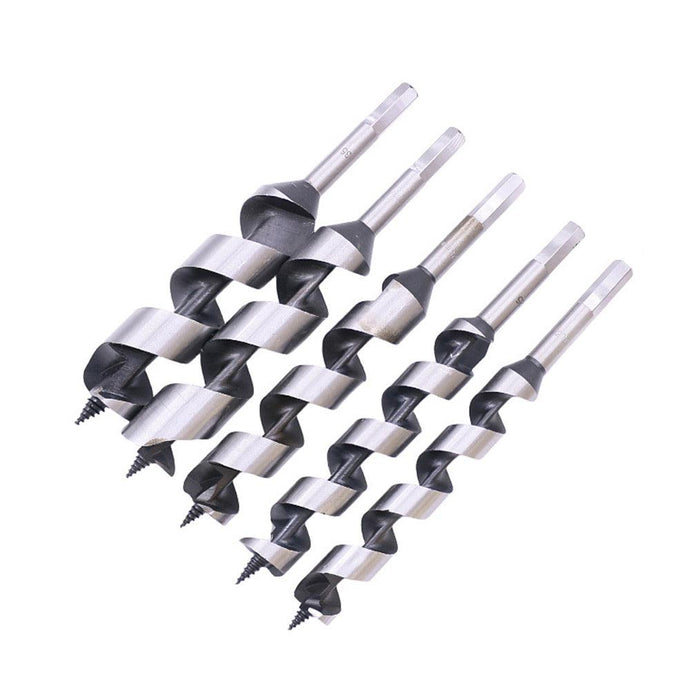 Understanding the Key Differences Between G and F Clamps
Understanding the Key Differences Between G and F Clamps
When it comes to clamping tools, G clamps and F clamps are two of the most widely used types, each with distinct characteristics and ideal applications. Both are designed to hold workpieces firmly in place during tasks such as cutting, gluing, or assembly, but they differ significantly in terms of structure, functionality, and the kinds of projects they are best suited for. Understanding these differences is crucial for choosing the right tool for the job and ensuring your work is secure, precise, and efficient.
G clamps, often referred to as C clamps due to their shape, are some of the most traditional and versatile clamps found in any workshop. The name "G clamp" comes from their distinctive shape, resembling the letter "G," where the frame forms a semicircle with an adjustable screw on one side. G clamps typically feature a simple, sturdy design, consisting of a cast iron or steel frame and a threaded screw mechanism that allows the user to tighten the clamp's jaws securely around a workpiece. The screw is rotated to adjust the clamp's pressure, and a swivel pad on the end of the screw helps distribute force evenly over the clamped surface.
One of the main advantages of G clamps is their robust and compact design. The solid frame makes them incredibly durable, capable of providing a high level of clamping pressure with minimal risk of bending or breaking. This makes G clamps ideal for heavy-duty applications, particularly in metalworking, welding, and other tasks where strong, consistent pressure is required. Their small size also allows for clamping in tight spaces or on smaller workpieces where larger clamps might not fit.
However, the primary limitation of G clamps is their relatively limited reach. The fixed frame size restricts the distance between the jaws, meaning that G clamps are typically better suited for smaller or medium-sized projects. Additionally, adjusting the clamp's pressure by rotating the screw can be a slow process, making G clamps less efficient for tasks that require frequent repositioning or adjustments. Despite these limitations, G clamps remain an essential tool for anyone working with materials that require precise, powerful clamping.
In contrast, F clamps, also known as bar clamps, are characterized by their distinctive F-shaped frame, which includes a long bar or rail with a fixed jaw at one end and an adjustable sliding jaw along the bar. The sliding mechanism allows the user to quickly and easily adjust the clamp's opening to accommodate workpieces of varying sizes. Once the sliding jaw is in the desired position, a threaded screw is used to tighten the clamp and apply pressure to the workpiece.
One of the key advantages of F clamps is their versatility and ease of use. The sliding jaw provides a much greater range of adjustment than a G clamp, allowing F clamps to be used on larger workpieces or for projects that require longer reaches. This makes them especially useful in woodworking, cabinetry, and furniture-making, where large panels, frames, or boards need to be held together during gluing or assembly. The ability to adjust the clamp quickly also makes F clamps ideal for projects where speed and efficiency are important, as they can be repositioned and tightened with minimal effort.
F clamps are also available in a wide range of sizes, with longer bars providing greater clamping capacity. This makes them suitable for larger-scale projects where G clamps might fall short. Additionally, the wide, flat jaws of F clamps distribute pressure more evenly across the workpiece, reducing the risk of damage, especially when working with softer materials like wood or plastic. Their long reach and ability to exert strong clamping pressure over a larger area make them an excellent choice for many types of assembly and construction tasks.
While F clamps offer greater versatility in terms of reach and adjustment, they are generally less compact and more cumbersome than G clamps. The long bar of an F clamp can make it difficult to use in tight spaces, and the sliding mechanism, while convenient, may not provide the same level of precision and stability as the solid frame of a G clamp. Additionally, F clamps may not be as effective for extremely heavy-duty tasks, such as welding or metalworking, where the rigid structure of a G clamp is better suited to withstand the high clamping pressures needed.
In terms of application, G clamps are often favored for tasks that require high clamping pressure in a compact form, such as welding, metalworking, or holding smaller parts in place for machining. Their strength and durability make them well-suited to these demanding tasks. On the other hand, F clamps are preferred for woodworking, carpentry, and larger assembly projects, where their greater reach and faster adjustment capabilities make them more practical for handling larger or awkwardly shaped workpieces.
In summary, the main differences between G and F clamps come down to their design, clamping capacity, and ease of use. G clamps offer strength, durability, and compactness, making them ideal for heavy-duty applications and tight spaces. However, their limited reach and slower adjustment process may make them less efficient for larger projects. F clamps, with their adjustable sliding jaw and greater clamping range, provide versatility and speed, making them a better choice for woodworking and larger-scale tasks. By understanding these differences, you can select the right clamp for each specific job, ensuring better results and a smoother workflow.
